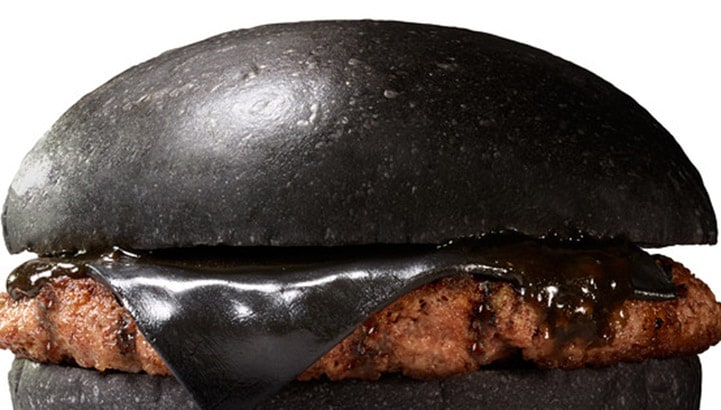
Burger King is not alone in its determination to alter a fast-food classic in order to capture the attention of local consumers. And, these black Kuro Burgers have proved successful in Japan in the past, the company said in a press release.
The Premium Kuro Burger first appeared in 2012, with bamboo charcoal coloured bread and squid ink ketchup. Next, came the Kuro Ninja, with added bacon. Its third and fourth incarnations, the Kuro Pearl and Kuro Diamond – the latter adding more visually palatable lettuce, tomato and onions – will be available from September 19.
But why black? In a response to New York Magazine, Eva Hyatt, a marketing professor at Appalachian State University who studies food preferences, said the negative associations between black and food made by some Western consumers are not shared in Japan.
“Here we associate black with death (unlike the Japanese, who associate white with death) and might think that black food is moulded or spoiled (ie, dead and inedible), or else associated with the flavour liquorice.”
In fact, she argues, the juxtaposition between a colour more traditionally associated with local Japanese products, such as black-bean, black walnut and squid ink, and foreign western brands makes it a particularly strong marketing stunt for the Japanese market.
So, she said, “the black Kuro burger would be novel and attention-getting but not unappetising”.
Burger King have adapted their model to launch a marketing campaign that will appeal directly to local tastes, a trend that has been replicated across the fast food market in Asia. In India, Dunkin’ Donuts partially attributes its success to its ability to adapt its entire model, adding extra products such as spicy sandwiches and wraps, to the simple American concept of Donuts and Coffee.
And, as CNN reported last month, brands in China have also been experimenting widely to compete in a $100bn fast food market. From soy milk and fried dough strips at McDonald’s, McDonald’s to Starbucks red bean green tea Frappuccinos, rising to the challenge of appealing to local tastes, while not veering too drastically from signature items.
Ellie Clayton
